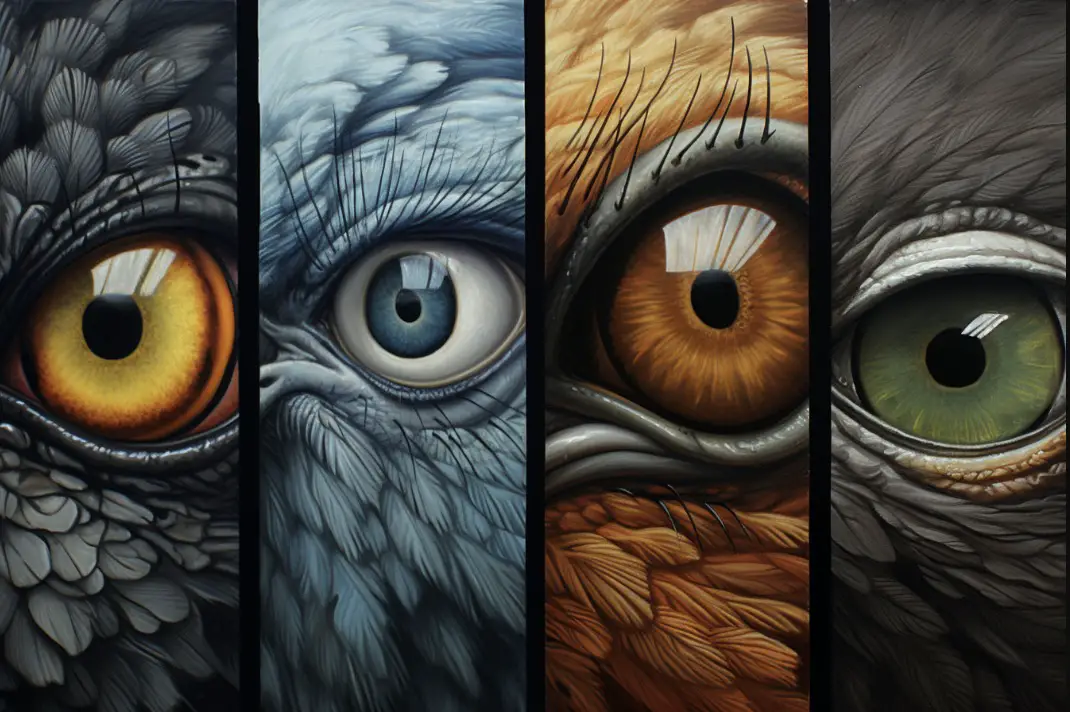Do birds have good eyesight? That is a question many outdoor enthusiasts and hikers often ask.
While the answer may vary depending on the type of bird, it’s important to understand how far different species can see in order to appreciate their environment better.
From eagles soaring high above to chickens scratching at our feet, we’ll explore what types of vision each bird has and how well they can spot prey or predators from afar.
The size of their eyes, the structure of their eyesockets, and the presence of certain anatomical features contribute to their visual acuity.
Here’s a breakdown summary of how different types of birds see:
- Birds in General: Birds possess exceptional vision, which is vital for their survival and behaviors such as flying, foraging, and mating. Bird eyes are relatively large in proportion to their head size, often larger than human eyes, and in some species, even as large as their brains. This large eye size enables a larger image to be formed on the retina, allowing birds to see fine details. The presence of a bony “sclerotic ring” around the eye helps support the eyeball and aids in lens shape adjustment. The large pupil size allows more light to enter the eye, enabling birds to see in dimmer light than humans. Birds have excellent color perception and visual acuity, which can be better than that of humans in certain aspects like detecting ultraviolet (UV) colors [1][2][5][6][7]
- Birds of Prey: Birds of prey, such as eagles and hawks, have a high density of receptors in their eyes, resulting in exceptional visual acuity. Their forward-facing eyes provide them with a wide field of binocular vision, which is essential for accurately tracking prey while flying. They have adaptations that maximize their visual capabilities, enabling them to spot small animals from high altitudes [2].
- Songbirds and Water Birds: Even songbirds and water birds exhibit impressive visual adaptations. For instance, the Steppe Eagle possesses excellent binocular vision, aiding it in locating and capturing prey. Seabirds like Blue-footed Boobies have eyes adapted to adjust focus rapidly when transitioning from air to water, allowing them to hunt fish underwater with sharp focus [3].
- UV Perception: Many bird species, including songbirds, have the ability to perceive ultraviolet (UV) colors in addition to the visible spectrum. Birds can see UV colors in each other’s plumage, enabling them to detect patterns and signals that are invisible to humans. This UV sensitivity plays a role in communication, mate selection, and identifying other birds’ health and qualities [5].
- Comparison to Humans: Birds often possess better vision than humans in specific aspects. While humans have trichromatic color vision (perceiving three primary colors), some birds can perceive four or even five primary colors, including UV. Additionally, birds have a wider field of view and can often see farther distances, although humans have better depth perception due to binocular vision [4].
In conclusion, different types of birds have evolved specialized visual adaptations that suit their ecological niches and behaviors. These adaptations enable birds to excel in various aspects of vision, including color perception, acuity, field of view, and the ability to see in dim light. Their visual capabilities contribute significantly to their survival, communication, and interactions with their environment.
We’ll investigate just how far some of our feathered friends are able to see by looking at specific species like eagles, hawks, owls, chickens, hummingbirds crows and vultures!
Contents
How Far Can Birds See?
Birds have incredible eyesight, with some species able to see up to three times better than humans. Depending on the species, birds can see distances of up to several miles away. For example, eagles are known for their keen vision and can spot prey from two miles away!
Hawks also have great vision and can detect small animals from a distance of one mile or more.
Owls are nocturnal predators that rely heavily on their sight when hunting at night; they can spot mice from over 100 feet away in low light conditions.
Chickens may not be as impressive as other birds when it comes to far-sightedness but they still have decent vision; chickens can usually spot food or potential danger within 30 feet or so. Lastly, vultures possess excellent long-distance eyesight and can locate carrion (dead animals) from up to five miles away!
Overall, different bird species vary greatly in terms of how far they’re able to see things—from just a few dozen feet all the way out past five miles. It is amazing what these creatures are capable of seeing with such powerful eyesight
Birds have incredible eyesight that allows them to see far distances and small objects, making them incredibly well-adapted for the outdoors. Next, we will explore how their eyesight helps birds survive in different environments.
What birds need to see things far away?
Birds of prey, such as eagles, hawks and falcons, have an impressive ability to spot their prey from far away. This is due to the fact that they have large eyes with a wide field of view which allows them to see further than other birds.
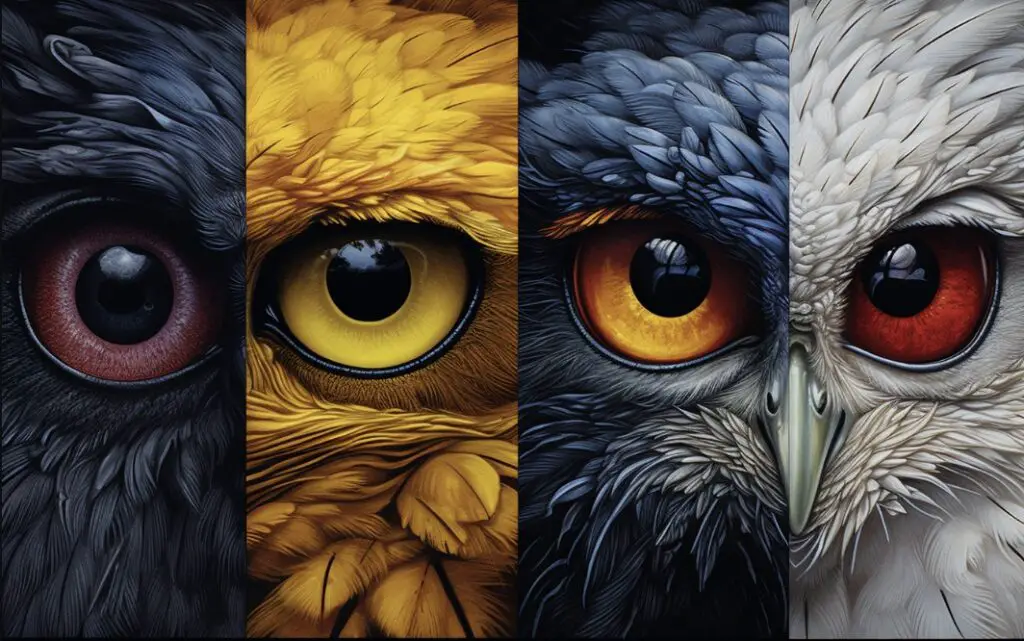
Their vision also has excellent color perception and can detect motion easily. These features allow them to spot small animals like mice or rabbits from hundreds of feet in the air.
Vultures are another type of bird that needs good distance vision in order to find food sources such as dead animals or carrion.
They often fly high up into the sky where they can scan for potential meals over vast distances. Vultures have very sharp eyesight and can even identify specific colors on objects below them from great heights!
On the other hand, chickens do not need a good distance eyesight since they mostly feed on ground-level insects and plants near their coop or barnyard area. Chickens rely more on smell than sight when searching for food so having good long-distance vision is not necessary for these types of birds.

Hummingbirds also don’t require strong distance vision because they typically feed on nectar close by flowers rather than flying long distances in search of food sources like some other species do.
Overall, certain types of birds need exceptional long-distance vision while others don’t necessarily require it at all depending upon what type of environment they live in and what kind of food source they depend upon for survival purposes.
Birds like eagles, hawks and vultures must be able to locate their prey quickly before it escapes while chickens may never need this skill set since most likely they won’t ever leave their immediate surroundings anyway.
Birds need to have good eyesight to see things far away, and that’s why they rely on their keen vision for navigation. Next, we’ll explore how birds use their eyesight in the wild.
Key Takeaway:
- Different bird species have varying eyesight abilities based on their environment and food sources.
- Birds of prey such as eagles, hawks and falcons have excellent color perception with a wide field of view that allows them to spot small animals from hundreds of feet in the air.
- Vultures can even identify specific colors on objects below them from great heights!
- Chickens rely more on smell than sight when searching for food so having good long-distance vision is not necessary for these types of birds.
How Far Can Eagles See?
Eagles are renowned for their keen eyesight, which is estimated to be eight times better than a human’s. This allows them to spot prey from two miles away or more and even detect movement at that distance.
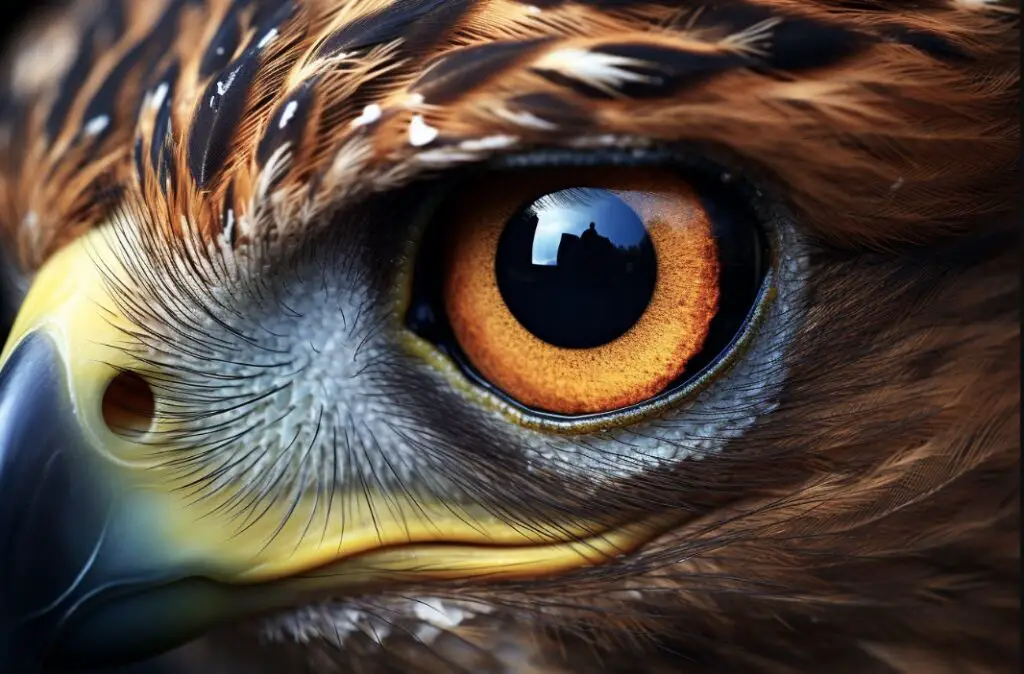
Eagles have an impressive range of vision due to the size of their eyes, which can measure up to 2 inches in diameter. The shape of their eyes also helps with long-distance viewing; they are slightly curved so light entering the eye is focused on the back of the retina, allowing eagles to see farther than other birds.
The amount of detail an eagle can make out from such a great distance depends on several factors including weather conditions and air quality. In ideal conditions, eagles can distinguish between colors and shapes very clearly—they may even be able to recognize individual animals!
On cloudy days or when there’s smog in the air, however, visibility will be reduced significantly.
In addition to having exceptional vision during daylight hours, some species of eagle possess night vision as well thanks to a special layer in their retinas called “tapetum lucidum” that reflects light back into photoreceptors making it easier for them see in low-light situations. This adaptation gives these nocturnal predators an advantage over other birds who rely solely on daytime hunting strategies.
When it comes down to it, all types of eagles share one thing: incredible sight that allows them to hunt effectively from far distances and keep watch over vast territories without ever leaving home base.
Eagles have amazing eyesight, able to see objects from up to two miles away. This impressive vision is essential for them to locate and catch prey, so it’s no surprise that their sight has been studied extensively. Next, let’s take a look at how the different species of eagles compare when it comes to eyesight.
Key Takeaway: Eagles have incredible eyesight that allows them to see up to two miles away and even detect movement from such a distance. This impressive vision is thanks to their large, curved eyes and the layer of “tapetum lucidum” in their retinas which reflects light back into photoreceptors for better night vision. Key elements: – Large, curved eyes – Tapetum Lucidum – 8x better than human’s sight – Can recognize individual animals in ideal conditions
How Far Can Hawks See?
Hawks are known for their incredible vision, with some species able to spot prey from up to three miles away. This impressive feat is made possible by the hawk’s large eyes and its ability to focus on objects in the distance. Hawks also have excellent peripheral vision which allows them to detect movement from a great distance.
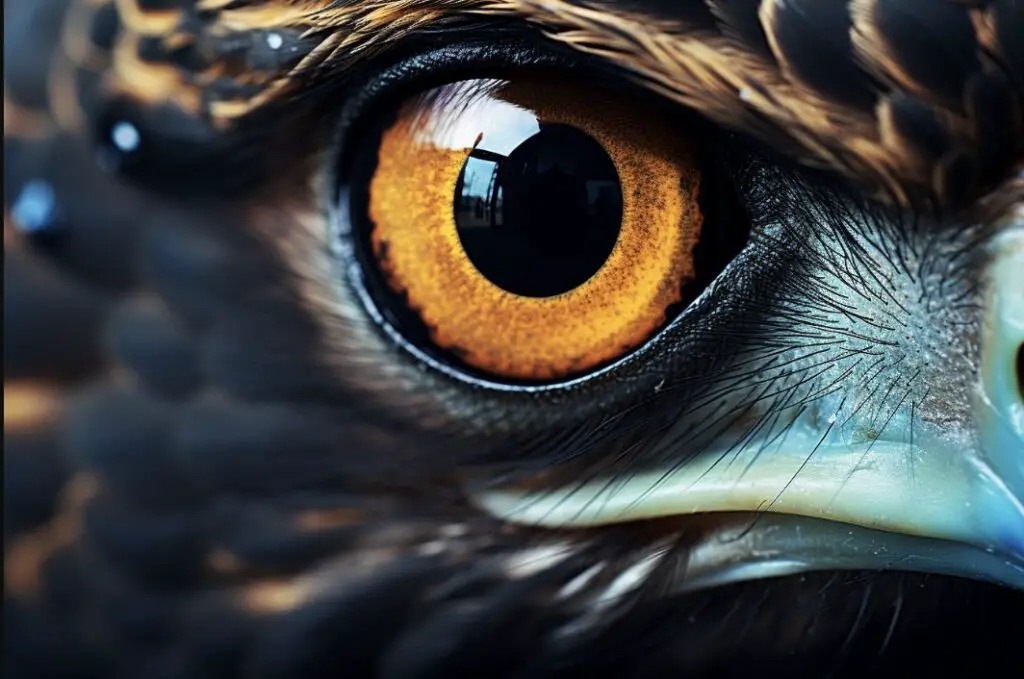
The sharpness of a hawk’s vision depends largely on its habitat and diet. For example, hawks that live in open areas such as grasslands or deserts tend to have better long-distance sight than those living in wooded areas where they must rely more heavily on their hearing and smell when hunting for food. Additionally, hawks that hunt larger animals need sharper eyesight than those who feed mainly on small rodents or insects because they must be able to see further distances in order to locate their prey.
In addition to being able to see far away, hawks also possess exceptional depth perception which helps them judge distances accurately while flying at high speeds during pursuit of prey or evading predators. This keen sense of spatial awareness enables them not only find food but also avoid obstacles like trees and power lines while flying at full speed through dense forests or other cluttered environments without crashing into anything along the way!
Hawks use this amazing combination of visual acuity and depth perception together with their acute hearing skills when searching for food over vast stretches of land below them, making it easy for them to spot potential meals even if they are hidden under foliage or buried beneath snow coverings during winter months. Studies show that red-tailed hawks can easily distinguish between two different types of mice scurrying around 30 feet apart; an impressive feat considering how small these creatures actually are.
Overall, hawks have incredibly powerful eyesight which gives them an advantage over many other birds when it comes to finding food quickly and efficiently; allowing these majestic creatures to soar above us all with ease.
Hawks have excellent eyesight, with the ability to spot prey from several miles away. Next, we’ll explore how their vision is adapted for hunting and navigation.
Key Takeaway: Hawks have incredibly powerful eyesight that allows them to spot prey from up to three miles away. Their vision is sharpened by their habitat and diet, with hawks living in open areas having better long-distance sight than those living in wooded areas. Additionally, they possess exceptional depth perception which helps them judge distances accurately while flying at high speeds. This combination of visual acuity and depth perception gives them an advantage over many other birds when it comes to finding food quickly and efficiently: • Spotting prey from up to 3 miles away • Sharpened by habitat & diet • Exceptional depth perception • Ability to distinguish between two small objects 30 feet apart
How Far Can Owls See?
Owls are well-known for their incredible vision, especially in low light conditions. Their large eyes and wide pupils allow them to see prey from up to one mile away. They can even detect movement in complete darkness! This makes owls a formidable predator, able to hunt with ease at night when other animals may be sleeping or unable to see.
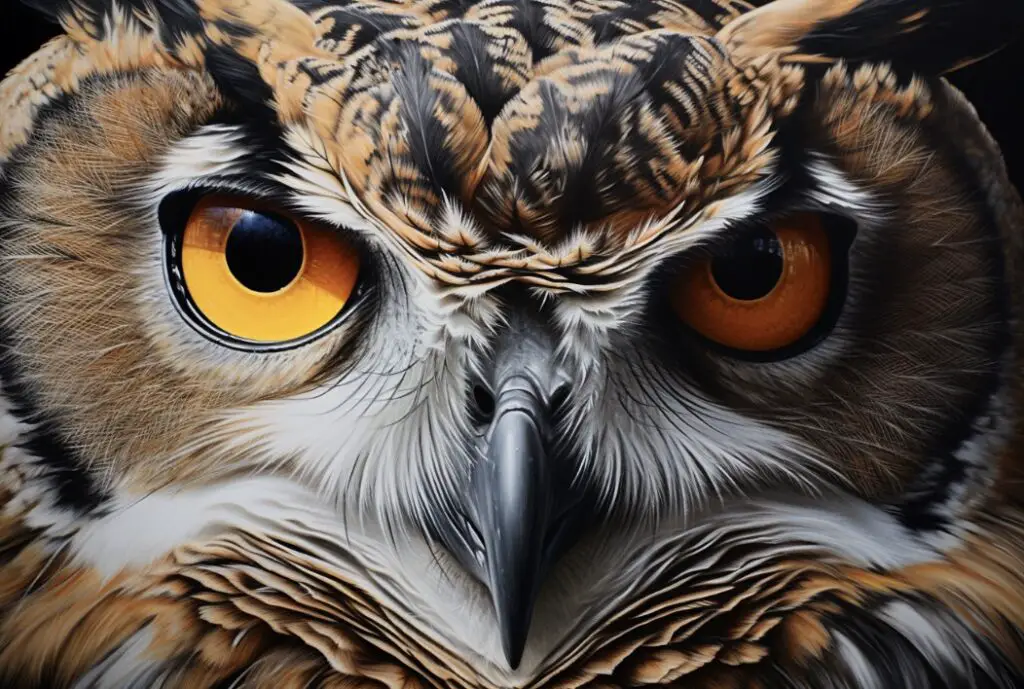
The size of an owl’s eye is also important for its vision. Owls have the largest eyes relative to their head size of any bird species, allowing them more light gathering ability than most birds. The shape of the pupil also helps owls see better in dim lighting; it is round rather than oval like many other birds which allows more light into the eye and gives owls a wider field of view as well as greater depth perception.
In addition to having excellent night vision, owls also have very good day vision too – they can spot prey from up to two miles away during daylight hours! This means that not only do they have great nocturnal hunting abilities but they can still keep an eye out for food sources during the day too if needed.
Another factor that contributes to an owl’s impressive sight is its binocular vision – this means that both eyes work together so that each one sees slightly different images which then combine into one image, giving them greater depth perception and accuracy when judging distances between objects or spotting potential prey items far away on land or in water bodies such as lakes and rivers.
Finally, some species of owl possess special adaptations such as facial discs around their eyes which help focus sound waves onto their ears enabling them hear small noises made by rodents scurrying through grasses or undergrowth – making it easier for them find food even if it’s hidden from view!
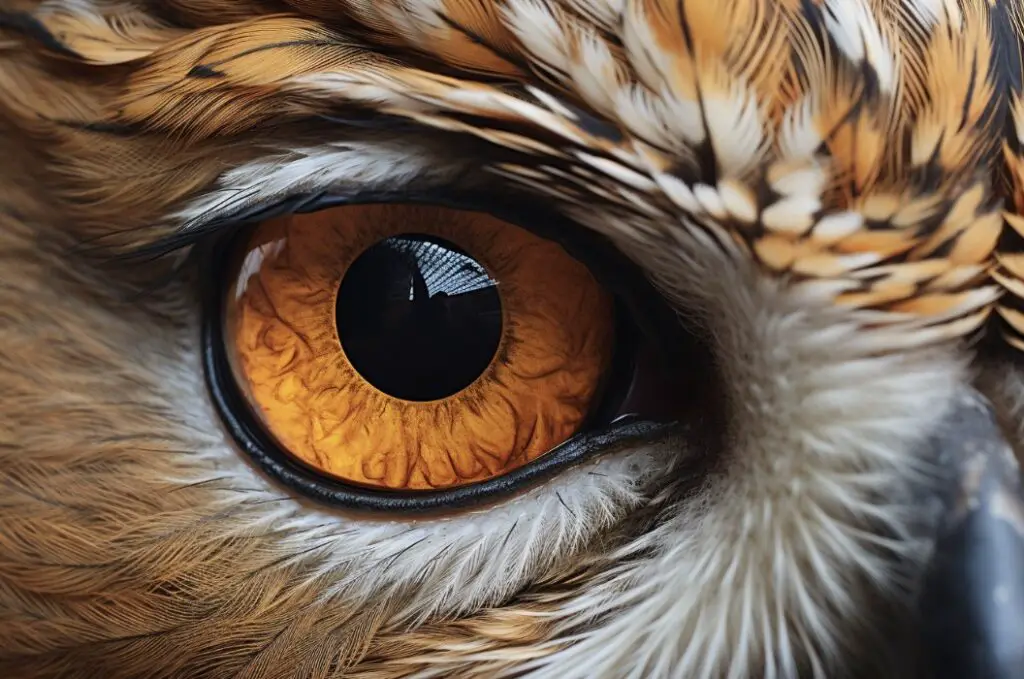
Overall, these various features make owls incredibly efficient hunters with exceptional long distance sight capabilities – whether it be during daytime hours or after dark. With their large eyes and wide pupils allowing them to see in low light conditions, they can spot prey from up to one mile away even in complete darkness.
Additionally, the shape of the pupil gives them a wider field of view as well as greater depth perception for judging distances between objects or spotting potential prey items far away on land or in water bodies such as lakes and rivers.
Some species also possess special adaptations like facial discs around their eyes which help focus sound waves onto their ears enabling them hear small noises made by rodents scurrying through grasses or undergrowth – making it easier for them find food even if it’s hidden from view!
Owls have remarkable eyesight, able to see up to 8 times farther than humans. However, their vision is not the only factor that helps them be successful hunters. Next we’ll explore how owls use their hearing and other senses to find prey.
Key Takeaway: Owls have some of the best eyesight among bird species, enabling them to hunt efficiently during both day and night. Their large eyes and wide pupils allow them to see prey from up to one mile away even in complete darkness. The shape of their pupil also gives them a wider field of view as well as greater depth perception for judging distances between objects or spotting potential prey items far away on land or in water bodies such as lakes and rivers. Some species also possess special adaptations like facial discs around their eyes which help focus sound waves onto their ears enabling them hear small noises made by rodents scurrying through grasses or undergrowth – making it easier for them find food even if it’s hidden from view!
What Bird Has the Best Vision?
The answer to the question of which bird has the best vision is undoubtedly eagles. Eagles have an impressive range of sight, being able to see up to 8 times farther than humans can.
This allows them to spot their prey from far greater heights than what would allow the prey to notice any incoming danger.
Eagles also possess a remarkable ability when it comes to focusing on their targets quickly and accurately. This works much like the lens of a camera or a mobile phone where you can swiftly zoom in and out at a subject.
In addition, they are capable of seeing colors that humans cannot detect, such as ultraviolet light emitted by animals if any.
Two species stand out among all other eagles when it comes to eyesight: The Crowned Eagle and the Golden Eagle.
These birds thrive in extreme weather conditions, high above in mountains and valleys where they can spot their prey like deer or sheep far down below with ease.
Steller’s Sea Eagles are even more impressive; they swoop down on fish from heights as far above as 80m!
In conclusion, while there may be some birds that have better vision than others depending on specific circumstances, eagles are certainly one of nature’s most skilled predators due largely in part thanks to their superior eyesight capabilities!
How Far Can Chickens See?
Chickens have relatively poor eyesight compared to other birds, but they still have good vision overall. Chickens can see objects up close as well as at a distance of around 100 feet or more depending on the size of the object.
For example, chickens can easily spot a person walking in their direction from about 50 feet away and will quickly run away if they feel threatened. They are also able to recognize familiar people and animals from far distances.
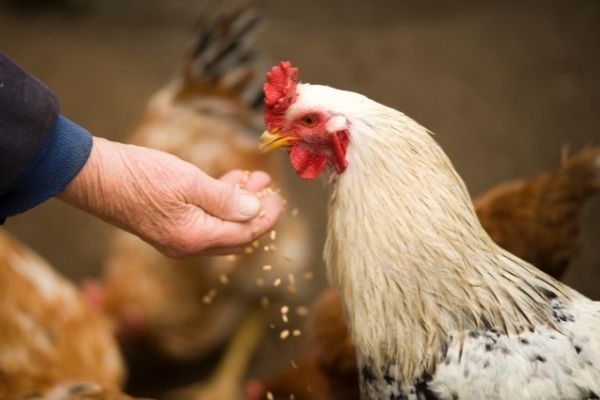
When it comes to identifying colors, chickens are not very adept at this task since they only have two types of color receptors in their eyes – red and green cones – which limits their ability to distinguish between different shades of color. However, they do seem to be able to detect changes in light intensity quite well so that when something moves into view or out of sight, chickens will notice it almost immediately.
In terms of depth perception, chickens appear to rely heavily on motion cues rather than visual cues for navigation purposes such as finding food sources or avoiding predators. This means that even though chickens may not be able to accurately judge how far away an object is by simply looking at it, they can still use its movement relative to themselves (or vice versa) in order determine whether or not it poses any danger before taking action accordingly.
Overall, while chickens’ vision isn’t perfect by any means – especially when compared with other birds like eagles – they are still capable hunters who possess enough acuity for most everyday tasks such as spotting potential prey items or recognizing familiar faces from afar; all without having access to the same level of visual information available through more advanced avian species like hawks and owls.
It is clear that chickens have excellent vision and can see far distances, however the exact range of their sight depends on the environment they are in. Next we will look at how different bird species compare when it comes to eyesight.
Key Takeaway: Chickens have relatively poor eyesight compared to other birds, but they still possess some useful vision capabilities. Chickens can spot a person or animal from around 50 feet away and recognize familiar faces from far distances. They are also able to detect changes in light intensity quickly and use motion cues for navigation purposes such as finding food sources or avoiding predators. While chickens may not be able to accurately judge how far away an object is by simply looking at it, their vision still serves them well enough for most everyday tasks.
How far can hummingbirds see?
Hummingbirds are small birds that can be found in many parts of the world. They have an incredible ability to fly quickly and hover in mid-air, which makes them one of the most fascinating creatures on earth. But what about their vision? How far can hummingbirds see?

Hummingbirds have excellent eyesight and can spot food from a distance. Studies suggest that they may be able to see up to 10 miles away! This is because their eyes contain more rods than cones, allowing them to detect movement better at a greater distance than other birds.
Their eyes also contain specialized cells called double cones, which allow them to perceive colors differently than other birds. These double cones give hummingbirds the ability to distinguish between reds and oranges much better than other species of bird. This helps them locate flowers with bright petals that are full of nectar – their favorite snack!
In addition, hummingbirds have two fields of vision: monocular (one eye) and binocular (both eyes). Monocular vision allows them to keep track of objects while flying around rapidly; binocular vision gives them depth perception so they know how close or far away something is from where they’re hovering or perching.
Finally, hummingbird’s pupils are very large compared with those of other birds – this means they take in more light when looking for food or trying to find shelter during storms or bad weather conditions. All these features combined make it possible for hummingbirds to spot prey from great distances!
Overall, it is evident that hummingbirds possess remarkable visual capabilities due to their unique anatomy and physiology as well as their adaptations over time. Their impressive sight allows them to not only survive but also thrive in a variety of environments around the world.
Hummingbirds have incredible eyesight, allowing them to see objects from far away. This is just one of the many impressive abilities that hummingbirds possess, and in the next heading we will explore how they use their vision in their everyday lives.
Key Takeaway: Hummingbirds have remarkable eyesight that allows them to spot prey from a distance of up to 10 miles away. This is due to their unique anatomy and physiology, including: • More rods than cones in the eye • Specialized double cones for color perception • Monocular and binocular vision • Large pupils. These adaptations enable hummingbirds to survive and thrive in many different environments around the world.
How far can crows see?
Crows are some of the most intelligent birds in the world, and they have incredible vision. Crows can see up to three miles away on a clear day. This means that they can spot predators or food sources from far away, giving them an advantage over other animals.
So How Far Can a Crow See?
Crows have incredibly sharp eyesight, allowing them to spot prey or potential threats from up to three miles away on a clear day. This is due to their large eyes and wide field of view; crows’ eyes take up about 20% more space than humans’ do in relation to their head size. Their ability to focus quickly also helps them pick out objects at long distances without having to move their heads much.
The Anatomy of a Crow’s Eye
A crow’s eye has many features that help it see farther than other animals’. It has larger pupils which allow more light into its retina, as well as two foveae – areas with high concentrations of photoreceptors – located near the center of each eye that give it better depth perception when looking at distant objects. The cornea is also curved slightly outward which allows crows greater peripheral vision than humans possess.
Having such good vision gives crows several advantages over other animals in terms of survival and finding food sources. For example, they can easily detect predators like hawks or cats before those predators even know they are there. They can also find food sources like insects or small mammals from far away, so they don’t have to waste energy flying around searching for something edible nearby; instead, they just fly straight towards what looks promising from afar.
Crows have exceptional eyesight, allowing them to see up to three times farther than humans. In the next section, we’ll explore how their vision helps them navigate their environment.
Key Takeaway: Crows have incredibly sharp eyesight that allows them to spot prey or potential threats from up to three miles away on a clear day. This is due to their large eyes and wide field of view, as well as two foveae located near the center of each eye and curved corneas which give crows greater peripheral vision than humans possess. These features provide crows with several advantages over other animals in terms of survival and finding food sources, such as being able to detect predators before they know they are there and easily spotting food sources from far away.
How far can vultures see?
Vultures are among the most impressive birds of prey when it comes to their vision. They have incredibly sharp eyesight, allowing them to spot carrion from miles away. But just how far can vultures see?

Anatomy of a Vulture’s Eye
The anatomy of a vulture’s eye is similar to that of other raptors, such as hawks and eagles. Their eyes are large and round with an extra-wide field of view. This allows them to easily spot food sources from great distances. Additionally, they have excellent binocular vision which helps them accurately judge distances and quickly identify potential meals on the ground below.
How Far Can Vultures See?
Vultures can see up to three miles away in ideal conditions! That means they can easily pick out carrion or other food sources from far off in the distance without having to get too close for comfort first. It also gives them plenty of time to swoop down and snatch up their meal before any other scavengers arrive on the scene.
What Helps Vultures Spot Food From Miles Away?
In addition to their keen eyesight, vultures also rely heavily on thermals – rising columns of warm air – while searching for food sources from high above the ground below. These thermals help lift them higher into the sky so they can scan larger areas more quickly than if they were flying at lower altitudes where there is less thermal activity available for assistance with flight maneuvers like soaring or gliding over long distances without expending much energy in doing so. As a result, vultures often fly very high in order take advantage of these thermals while looking for meals beneath them – sometimes reaching heights well over 10,000 feet.
Why Do Vultures Have Such Good Vision?
Vultures need good vision not only because it helps them find food but also because it keeps predators away by allowing them to detect danger sooner than many other animals would be able to due its wide field-of-view capabilities combined with its excellent binocular vision abilities mentioned earlier. This means that even if something dangerous approaches one side or another while a vulture is soaring through the skies above, chances are it will still be able to detect whatever threat may come its way thanks largely due to its exceptional visual acuity.
Vultures are one of the most fascinating birds in the world. With their sharp eyesight and ability to soar high above the ground, they can see for miles and miles. But just how far can vultures see?
How Vultures See
Vultures have incredibly keen vision that allows them to spot potential prey from a great distance away. They use their powerful eyesight to search for food on the ground or in trees, and then swoop down quickly when they find something edible. This is why it’s important for hikers and outdoor enthusiasts to be aware of their surroundings when venturing out into nature – you never know if a hungry vulture might be watching!
How Far Can Vultures See?
The exact range of vision varies between species, but generally speaking, vultures can see up to three miles away with incredible clarity. In some cases, they may even be able to spot prey from five or six miles away! To put this into perspective, if you were standing at the top of a mountain peak looking out over an expansive landscape below you could easily make out details like buildings or roads from several miles away – this is roughly what a vulture would be able to do as well.
Why Do Vultures Have Such Good Vision?
It’s not just luck that gives these birds such impressive sight; there are actually several factors at play here. For starters, many species of vulture have larger eyes than other types of bird which helps them take in more light (and therefore more detail) while searching for food on the ground below them. Additionally, their wingspan is also much wider than other birds which means they can fly higher up in order get better views over longer distances without having to expend too much energy doing so. Finally, because they feed primarily on carrion (dead animals), it’s essential that they have good vision so that they don’t miss any potential meals!
In conclusion, although there isn’t an exact answer as each species has different ranges of vision depending on its size and habitat conditions – overall it is safe to say that most vultures can easily spot prey from up to three miles away thanks to their large eyes combined with wide wingspans allowing them greater elevation while flying around looking for food sources below them.
Vultures have incredibly sharp eyesight, and can spot food from miles away. Now let’s look at how vultures use their keen vision to hunt for prey.
Key Takeaway: Vultures have incredibly sharp eyesight that allows them to spot carrion from up to three miles away. This is made possible by their large, round eyes with an extra-wide field of view and excellent binocular vision which helps them accurately judge distances and quickly identify potential meals on the ground below. Additionally, they take advantage of thermals while soaring in order to search for food sources more efficiently. All this combined makes vultures one of the most impressive birds of prey when it comes to their vision. Key Takeaways: • Vultures can see up to 3 miles away • Have large, round eyes with wide field-of-view & binocular vision • Use thermals while searching for food
FAQs in Relation to Bird Eyesight?
Do birds have better sight than humans?
Yes, birds have better sight than humans. Birds have eyes that are specially adapted to help them spot prey from a distance and navigate in flight. Their eyes contain more rods than cones, allowing them to see better in low light conditions. They also have an increased field of vision due to their large eyes being set further apart on their head. Additionally, some species of birds can even detect ultraviolet light which is invisible to the human eye. All these factors combined give birds superior vision compared to humans.
Do birds see humans?
Yes, birds can see humans. They have excellent vision and can detect movement from a distance. Their eyes are designed to pick up on subtle changes in the environment, so they can easily spot us when we’re out in nature. Birds also have color vision, which helps them recognize different shapes and colors of objects like people or animals. Additionally, their wide field of view allows them to scan large areas quickly for potential threats or food sources.
Conclusion
In conclusion, it is clear that birds have very good eyesight and can see far distances. Eagles are known to be able to spot prey from up to two miles away, while hawks can see up to four times further than humans. Owls have excellent night vision and chickens can detect movement at a distance of around 100 feet. Hummingbirds, crows and vultures also possess sharp vision that allows them to identify food sources from afar. All in all, the answer to the question “Do birds have good eyesight?” is an emphatic yes!
With Outlife, you can explore the outdoors and hiking with an informed perspective on the birds that inhabit our natural spaces. By understanding more about their eyesight, we can better appreciate these incredible creatures while helping to protect them from threats such as habitat loss or over-hunting. Join us in taking a closer look at bird vision and how it affects their behavior – let’s work together towards finding solutions for preserving avian life!
References
- Birdwatching Daily. (n.d.). Why birds’ eyes are so large and how they function. Retrieved from https://www.birdwatchingdaily.com/news/science/why-birds-eyes-are-so-large-and-how-they-function/#:~:text=The%20eyes%20of%20most%20birds,in%20front%20(binocular%20vision).
- Wikipedia. (n.d.). Bird vision. Retrieved from https://en.wikipedia.org/wiki/Bird_vision
- Science of Birds. (n.d.). Bird Eyes and Vision. Retrieved from https://www.scienceofbirds.com/blog/bird-eyes-and-vision
- Bored Panda. (n.d.). This Is How Birds See The World As Compared To Humans And It’s Pretty Amazing. Retrieved from https://www.boredpanda.com/human-vs-bird-vision/
- Oxford Academic – BioScience. (2000). Taking a Bird’s-Eye View…in the UV: Recent studies reveal a surprising new picture of how birds see the world. Retrieved from https://academic.oup.com/bioscience/article/50/10/854/233996
- Frontiers in Neuroscience. (2017). What Drives Bird Vision? Bill Control and Predator Detection Overshadow Flight. Retrieved from https://www.frontiersin.org/articles/10.3389/fnins.2017.00619
- Bio Explorer. (n.d.). Top 26 Animals With BEST Eyesight (Visual Adaptations). Retrieved from https://www.bioexplorer.net/animals-with-best-eyesight.html/

